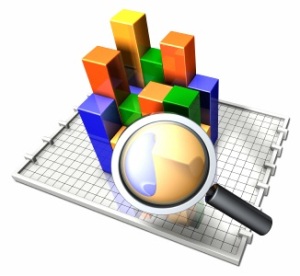Social media analytics is the practice of gathering data from blogs and social media websites and analyzing that data to make business decisions. The most common use of social media analytics is to mine customer sentiment in order to support marketing and customer service activities.
The first step in a social media analytics initiative is to determine which business goals the data that is gathered and analyzed will benefit. Typical objectives include increasing revenues, reducing customer service costs, getting feedback on products and services and improving public opinion of a particular product or business division.
Once the business goals have been identified, key performance indicators (KPIs) for objectively evaluating the data should be defined. For example, customer engagement might be measured by the numbers of followers for a Twitter account and numbers of retweets and mentions of a company’s name.
There are a number of types of software tools for analyzing unstructured data found in tweets and Facebook posts. In addition to text analysis, many enterprise-level social media tools will harvest and store the data.
Someone once told me that the only function of a business that can be in a testing phase and money making is marketing. And that couldn’t be truer in today’s landscape.
Social Media is all about being “social,” which means conversational, interactional and responsive. But it still all must relate back to the bottomline (in some way), so with every status update, tweet and blog post, we instantly want to know the answer to two questions – “What is happening?” and “What does it mean?”
With real-time analytics, we can instantly view and track the performance of our efforts. This beautiful tracking effort is made possible through real-time analytics, as opposed to batch analytics, that is analytics collected based on a timeframe between two events, which used to be the only way we could track performance. Now, thanks to technological upgrades and better systems, real-time analytics in social media tracking have become available…and necessary.
Here are three reasons social media needs analytics:
1. We need to Know-Social media actions require an analyst or marketer to instantly know what is happening in the space. We need to know what happens immediately after a post is visible, after a link is revealed, and when a tweet is sent. Real-time analytics can provide reach, views, shares, etc., which is the primary analytical function of counting, the bread and butter of the analysis. Without counting and collecting the numbers, we cannot accurately work to adjust or measure. And that brings us to number two…
2. We need to Adjust -After knowing what’s going on , we need to figure out how to adjust accordingly. Let’s say that a company posts a tagged or shortened link on Twitter and is awaiting click through for a great deal redemption. If users catch on (and it will be known because there will be counting), the deal could be redeemed and stock can run low or the offer could be too good to be true…OR it could simply be great and it should be done again. Either way, follow-up actions will be based on that specific action so real-time analytics are needed to help make adjustments one way or the other.
3. We need to Measure-Once the scope is known and necessary adjustments are made, the actions need to be measured. Measurement might be necessary straight away to track instant progress and instant actions that are time-based. Specifically, if a company posts an event on Facebook, they need to know how many people see that event status update so they can compare to past analytics to gauge how many RSVPs they may collect and if they need to expand outreach. If outreach is expanded and a combination of social media efforts helped make it to the total number of RSVPs needed, this should be recorded and tracked to calculate the ROI.
Social media is social and instant. Tracking real-time data can foster efficient and effective campaign execution.


Leave a comment